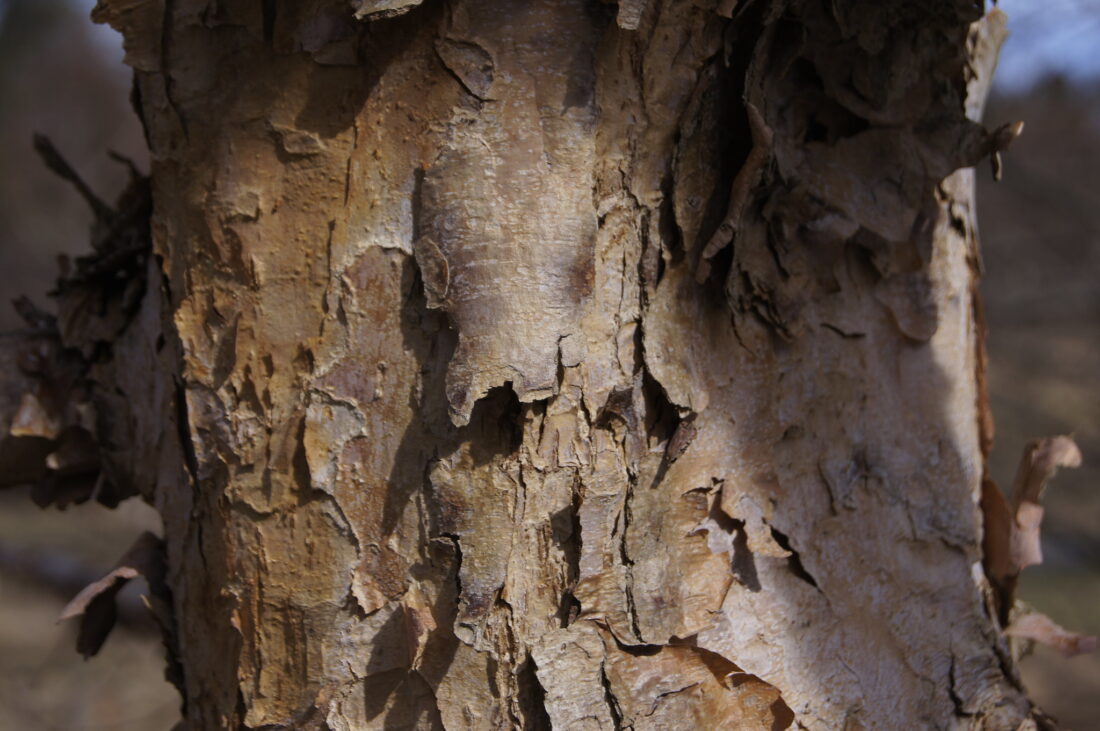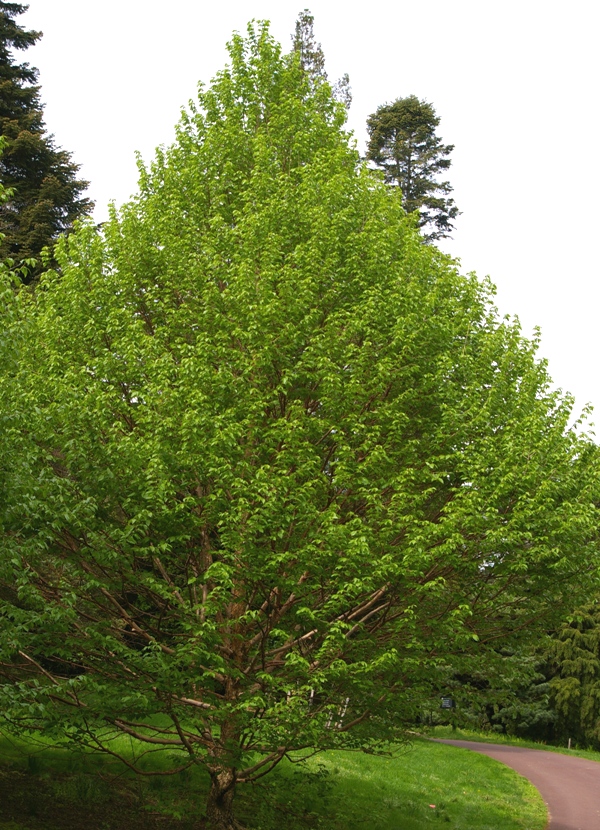Sure, you learn that accurately—Father Farges’ filbert. And no, this isn’t simply one other obscure plant identify to tuck away behind your botanical mind. This is likely one of the most enjoyable bushes I’ve come throughout prior to now half-decade.
This alliterative filbert is known as for Father Paul Guillaume Farges, a Nineteenth-century Catholic missionary and plant explorer who spent a lot of his life in China. If his identify rings a bell, it’s most likely as a result of he has a number of crops named in his honor, most notably the clumping bamboo Fargesia. However of all of the crops that bear his identify, I’d argue that none are fairly as outstanding as this one—Corylus fargesii, higher referred to as Farges’ filbert.

What Makes Farges’ Filbert So Particular?
For starters, this tree has distinctive bark—among the finest within the enterprise. Consider the coppery peeling bark of a paperbark maple (Acer griseum) or a river birch (Betula nigra), however higher. It’s richly coloured, exfoliating in layers, and gives beautiful visible curiosity year-round. Even within the depths of winter, when most bushes fade into the background, this one instructions consideration.
However bark isn’t its solely promoting level. The leaves are a clear, deep inexperienced in summer time, offering a lush cover that transitions to a heat golden yellow in fall. Whereas its nuts are technically edible (as you’d anticipate from a filbert), it’s not cultivated for heavy nut manufacturing—that is before everything a decorative tree.
A Uncommon Discover in North America
Regardless of its many virtues, Corylus fargesii remains to be comparatively unknown in North American landscapes. It’s a newcomer, with the primary seeds arriving from China in 1996. Since then, a number of main botanical gardens, together with the Morris Arboretum and Longwood Gardens, have been rising and evaluating it. Some specimens have already reached over 30 toes tall, although its final measurement in U.S. gardens remains to be an open query.
What is obvious, nevertheless, is that this tree has a good looking, upright type and a powerful, well-structured branching behavior. It appears poised to be a unbelievable addition to gardens and landscapes, notably for these searching for an alternative choice to extra widespread decorative bushes like river birch or Japanese maples.

The place to Discover It (If You’re Fortunate)
Till lately, Corylus fargesii was nearly unattainable to search out outdoors of analysis collections. It merely wasn’t out there within the nursery commerce. However that’s altering—slowly.
A couple of specialty nurseries have began providing it on the market, and people of us who’ve been ready for years to get our palms on one are leaping on the alternative. Simply final week, a employees member at Coastal Maine Botanical Gardens noticed it at Uncommon Discover Nursery, and we wasted no time inserting an order.
The Way forward for Farges’ Filbert
So, will Corylus fargesii turn out to be the subsequent nice panorama tree? It definitely has the potential. It gives four-season curiosity, nice bark, and a resilient, upright type—all with out the widespread illness points that plague another decorative bushes.
The actual query is whether or not it is going to achieve traction with dwelling gardeners and landscapers. As extra nurseries begin propagating and promoting it, I wouldn’t be shocked to see Farges’ filbert turn out to be a sought-after specimen tree in gardens throughout the nation.
Have you ever ever seen Corylus fargesii in a backyard? What do you consider its future within the panorama? Drop a remark—I’d love to listen to your ideas.
—Rodney
A wonderful abstract of Corylus fargesii was written by Tony Aiello, director of horticulture and curator of the Morris Arboretum in Philadelphia. This text was revealed within the journal of the Arnold Arboretum, Arnoldia. I linked to the article above in addition to by clicking right here.
Pictures: Robert Gutowski by way of Flickr, John Grimshaw
